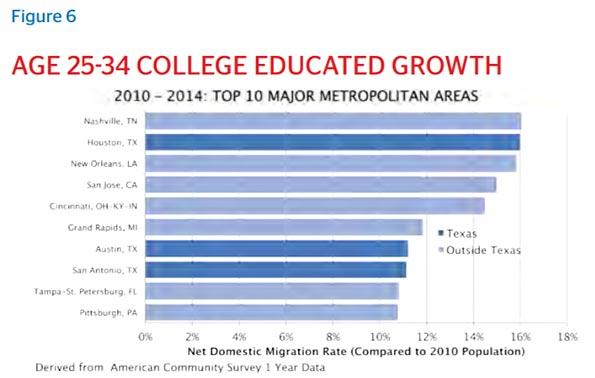Analyzing San Antonio’s Educational Challenges and Pathways to Improvement
San Antonio’s Academic Standing in Relation to State and National Averages
Recent evaluations indicate that San Antonio’s education system is underperforming when compared to both Texas state and national academic standards. Students consistently score below average on standardized assessments in fundamental subjects like mathematics and reading. While some neighboring metropolitan areas have shown gradual progress, San Antonio’s educational advancement remains largely stagnant, exposing significant disparities across its school districts. Contributing factors include insufficient funding, a shortage of qualified educators, and limited access to advanced coursework and modern technology.
Highlights of San Antonio’s academic performance relative to benchmarks:
- Math proficiency rates are approximately 12% lower than the Texas state average.
- Reading proficiency lags behind the national average by nearly 10%.
- High school graduation rates stand at about 75%, compared to the state average of 85%.
| Metric | San Antonio | Texas Average | National Average |
|---|---|---|---|
| Math Proficiency | 48% | 60% | 62% |
| Reading Proficiency | 52% | 58% | 62% |
| Graduation Rate | 75% | 85% | 86% |
Underlying Obstacles Hindering Academic Progress in San Antonio
San Antonio’s educational landscape is challenged by a multifaceted set of issues that impede student achievement. One of the most significant hurdles is the prevalence of economic inequality, which affects a large segment of the student body even before they enter school. Approximately 60% of public school students reside in households below the federal poverty threshold, which often results in limited access to educational materials, unstable living conditions, and food insecurity. These hardships are strongly linked to diminished academic performance and increased dropout rates, creating a persistent cycle of educational disadvantage.
Moreover, the city struggles with unequal distribution of resources and difficulties in retaining qualified teachers. Schools located in lower-income neighborhoods frequently lack up-to-date textbooks and technology, restricting students’ ability to develop essential skills for the modern workforce. A recent survey revealed that over 30% of educators in the district have contemplated leaving their positions due to burnout and insufficient support, which disrupts instructional continuity and lowers teaching quality.
- Elevated student-to-teacher ratios limiting personalized instruction
- Scarcity of after-school enrichment programs reducing learning beyond the classroom
- Outdated and deteriorating school infrastructure impacting the learning environment
| Challenge | Effect on Education |
|---|---|
| Poverty | Limits access to learning tools and stability |
| Teacher Attrition | Decreases instructional consistency and mentorship |
| Resource Deficiencies | Hinders engagement with contemporary curricula |
How Socioeconomic Conditions Shape Student Outcomes in San Antonio
Socioeconomic factors play a pivotal role in shaping educational success for many students in San Antonio. A considerable number of children face obstacles such as low family income, limited access to quality early education, and food insecurity, all of which create an uneven starting point. Studies show that students from economically challenged households often have fewer educational supports, less parental involvement due to work demands, and heightened stress, all contributing to lower academic achievement and graduation rates.
Prominent socioeconomic influences include:
- Insufficient access to home technology and reliable internet connectivity
- Higher rates of single-parent families
- Concerns about neighborhood safety restricting participation in after-school activities
- Limited availability of extracurricular and tutoring programs
| Factor | San Antonio Data | National Average |
|---|---|---|
| Children Living in Poverty | 24% | 16% |
| Households Without Internet Access | 18% | 9% |
| High School Graduation Rate | 78% | 85% |
To effectively tackle these disparities, a comprehensive strategy is essential—one that includes increased investment in public education, community-based support initiatives, and policies aimed at alleviating poverty. Without such coordinated efforts, San Antonio risks perpetuating educational inequities that hinder the city’s long-term social and economic development.
Actionable Strategies to Enhance Educational Equity and Achievement
Closing the educational achievement gap in San Antonio demands focused reforms centered on fair distribution of resources and collaborative community engagement. Priorities should include boosting funding for schools in underserved areas, expanding access to quality early childhood programs, and enhancing teacher development with an emphasis on cultural responsiveness and innovative teaching techniques. Strengthening partnerships among schools, families, and local organizations is also critical to fostering environments that support both academic success and students’ emotional well-being.
Utilizing data-driven approaches will help identify urgent needs and measure progress. The table below outlines key focus areas alongside strategic initiatives and their anticipated benefits:
| Focus Area | Strategic Initiative | Projected Outcome |
|---|---|---|
| Equitable Funding | Allocate grants preferentially to low-income districts | Narrowed achievement disparities |
| Teacher Development | Implement comprehensive professional growth programs | Enhanced teaching effectiveness |
| Community Involvement | Create local education advisory councils | Greater parental and community participation |
| Digital Equity | Provide devices and broadband access to all students | Closed technology access gaps |
Final Thoughts: A Call to Action for San Antonio’s Educational Future
As highlighted by the recent Tierrabyte report, San Antonio’s educational system faces pressing challenges that require immediate and sustained attention. Falling behind state and national averages threatens the city’s economic vitality and social equity. It is imperative that policymakers, educators, and community stakeholders unite to implement targeted investments and innovative solutions. By doing so, San Antonio can close the achievement gap and ensure that every student is equipped with the tools and opportunities necessary for success in an increasingly competitive world.




